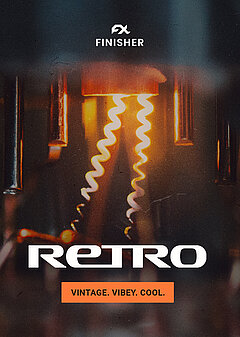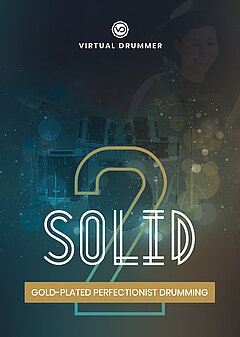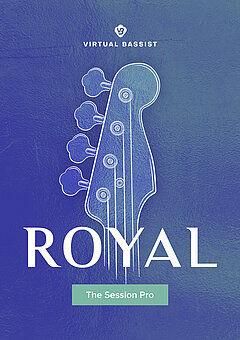How To Bring Back The Golden Era Of Analog Gear Pt. 1
In this article, Eli Krantzberg captures the feeling and mood of the 60’s & 70’s. With Finisher RETRO, bringing back the golden era of analog gear to recordings and software instruments is, arguably, a form of modern nostalgia!
MARCH 31ST, 2021
Yesterday Once More
by Eli Krantzberg
When we think of nostalgia, we think of a yearning for the past. Typically of a happy period with positive associations. But the funny thing about nostalgia is that, due to effective marketing and advertising, you don’t necessarily have to have actually experienced a time and place first hand to feel nostalgic for it. And as a result, it is too easy to white-wash or sentimentalize moments in time that never quite existed as we imagine them.
Idealizing The Past
Take Disney, for example. It harkens back to (or emulates for our purposes) an idealized version of a time that never quite existed as it was presented. You never see anxiety about the economy, repressive social mores, suffocating conservative family values, domestic violence, alcohol abuse, or gender and racial inequality depicted. We have a similar phenomenon, built around a not wholly accurate nostalgic ideal, happening with music production.
We are into the third decade of the new Millenium, and the hottest thing still is recreating analog hardware from the last century. The thing is, it is nearly impossible to truly reproduce all the conditions necessary to recreate the sounds of an era accurately. Instruments were made differently. Players played differently. The entire recording chain and environments were different. No matter how many vintage LA2A, 1176, Pultech EQ, Tape saturation, Neve or SSL plug-ins you use, we only get a small piece of a much larger, more nuanced reality.
There were often extreme limitations in the technology that defined part of the era’s aesthetics out of necessity. For example, we’ve all heard Beach Boys or Rolling Stones recordings where the tambourine or claps are insanely loud in the mix. I suspect that these were often the unintentional result of cumulative destructive tape bounces and no Undo buttons.
Instruments weren’t the same either. Guitars slipped out of tune; old drum skins sounded dead, sax players didn’t have the same selection of reeds, amps made noise or had ground hum, and so on. Later we had early digital effects processing, 24 track consoles, black dot drum skins, deeper snare drums, toms with no bottom skin, and so on. All of these various and disparate elements contributed to the sound of these eras.
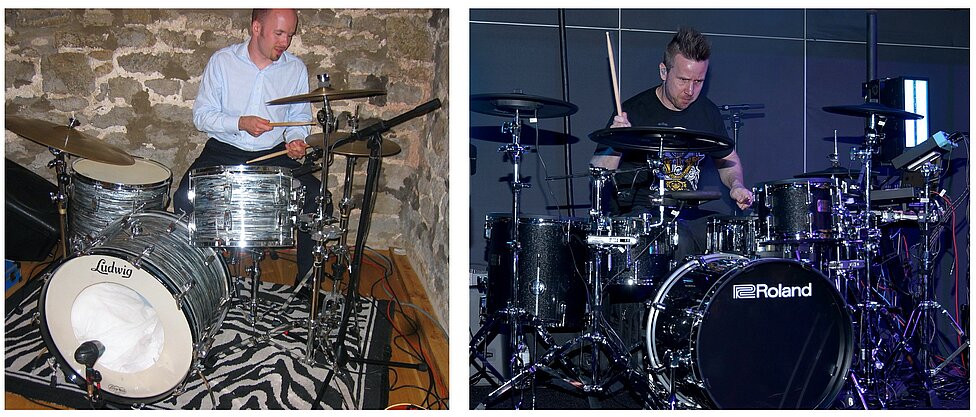
No amount of plug-ins will make either of these drum sets sound like the other (Photo by Glenn Francis)
What’s New Is Old Again
I suspect that the sound of emulations of vintage gear, as applied to modern 24-bit samples and software instruments and pristine recordings on modern instruments through modern audio interfaces, will in itself become the sound of these early decades. We are juxtaposing elements to create another era’s feeling or sound onto modern sounds, instruments, and arrangements. And that in itself will become its own sound.
So rather than unsuccessfully chasing down isolated emulations of isolated elements found in now ancient technologies, why not simply try to capture the overall feeling and mood of the eras? Enter Finisher RETRO from UJAM. As with all of their Finisher line, the interface comprises macros designed for easily dialling in sounds derived from complex signal chains. With RETRO, the macros are specifically designed to recreate and evoke specific eras’ feelings and sound. Applying these processes to our modern recording and software instruments is, arguably, a form of modern nostalgia!
It’s important when trying to emulate an era’s sound to understand the contributing technologies and aesthetics. For example, the 1960s were characterized by the British invasion and the first country and folk-inspired singer-songwriters. The 60s also saw the rise of Motown, R&B, soul, and funk. Four track tape machines (with lots of track bouncing) were the norm.
The 1960s
To situate yourself in the technology, think Glyn Johns drum micing technique, Fender Precision electric bass, early Marshall guitar amps, single-coil fender guitars, spring reverbs, short tape delays. A typical vocal recording chain might have been a Neumann U47 mics -> EMI/Chandler TG2 Pre -> Fairchild 660/670 -> Pultec / Drawmer 1960s EQs. Mixing often involved hard panning and plenty of tape compression.
Here is a simple track I put together in the style of the 1960s. I’m using UJAM’s Virtual Bassist ROYAL 2 for the bass part, Virtual Guitarist SPARKLE for guitar, Virtual Drummer SOLID 2 for the drums, and a plug-in called Combo Model F for an organ sound. You can hear that I’ve tried to create the parts in the style of the era. I’ve got the sounds as close as I could to the era’s aesthetics with the available instrument parameters. It sounds pretty good but doesn’t seem to really fully evoke the character and feeling from that decade.
A simple arrangement, using modern software instruments, trying to evoke the feeling of the 1960s
Here is the same track with several instances of Finisher RETRO sprinkled across the track. By dialling in settings with the available variation knobs, the overall sound, blend, and cohesion of the track, is one that more closely matches the technical characteristics of the decade.
The same track, with several Finisher Retro “1960s” settings applied.
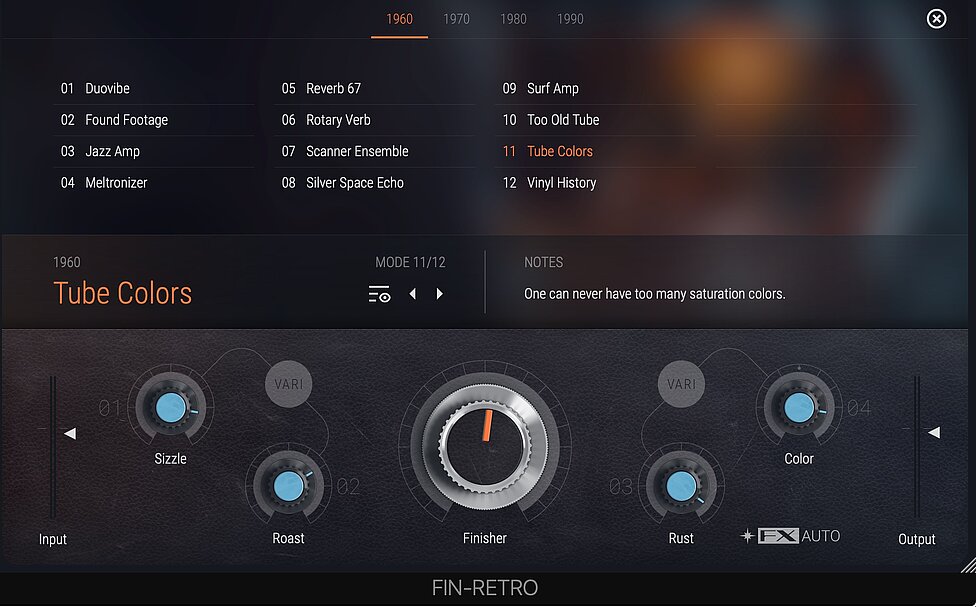
A Closer look
As you can hear, the change in character is pretty dramatic, without changing the actual parts being played or the instruments used. Let’s take a closer look. Finisher RETRO is used on the bass to recreate the natural saturation that happened when basses drove tubes a little too hard. The sizzle and crunchiness are captured, with the addition of the resulting tonal roll-off.
Tube crunchiness and sizzle are applied, along with the accompanying low-end roll-off that occurred naturally.
4 bars of Virtual Bassist ROYAL 2 followed by 4 bars with Finisher RETRO.
The drums were run through another set of Finisher RETRO macros, recreating the effects of old overdriven tubes. Often engineers added low shelf and high shelf EQ to compensate for the loss of fidelity. This was referred to as a “smiley face” EQ curve due to the shape the graphic EQ sliders made.
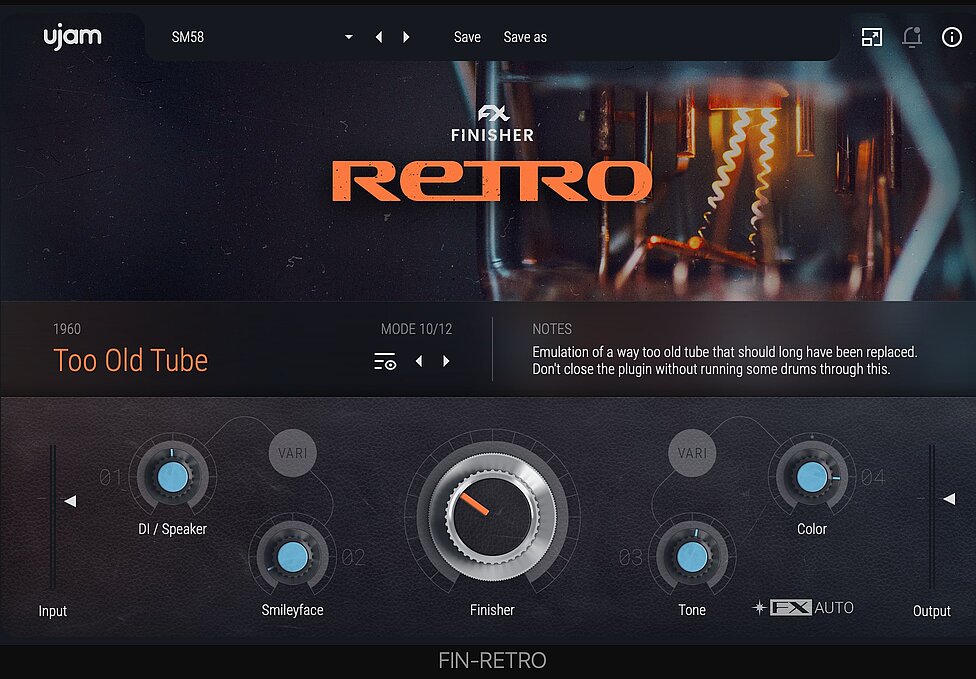
Overdriven tube degradation applied to the drums
4 bars of Virtual Drummer SOLID 2 followed by 4 bars with Finisher RETRO.
1960’s guitar tones incorporated a lot of colourful processing. Tube amps often had tremolo or vibrato controls in addition to Spring reverb. In this example, I used two Finisher RETRO instances set up in series to process the guitar. The first is used to capture the fidelity and imaging of vinyl. I panned the guitar in the mix and wanted to collapse SPARKLE’s field, so it wasn’t so wide, before running it through the second processing stage. For this, I used a Finisher RETRO setting that focuses on the spring reverb found in the old Fender Spring Reverb guitar amps that were ubiquitous in the 1960s.
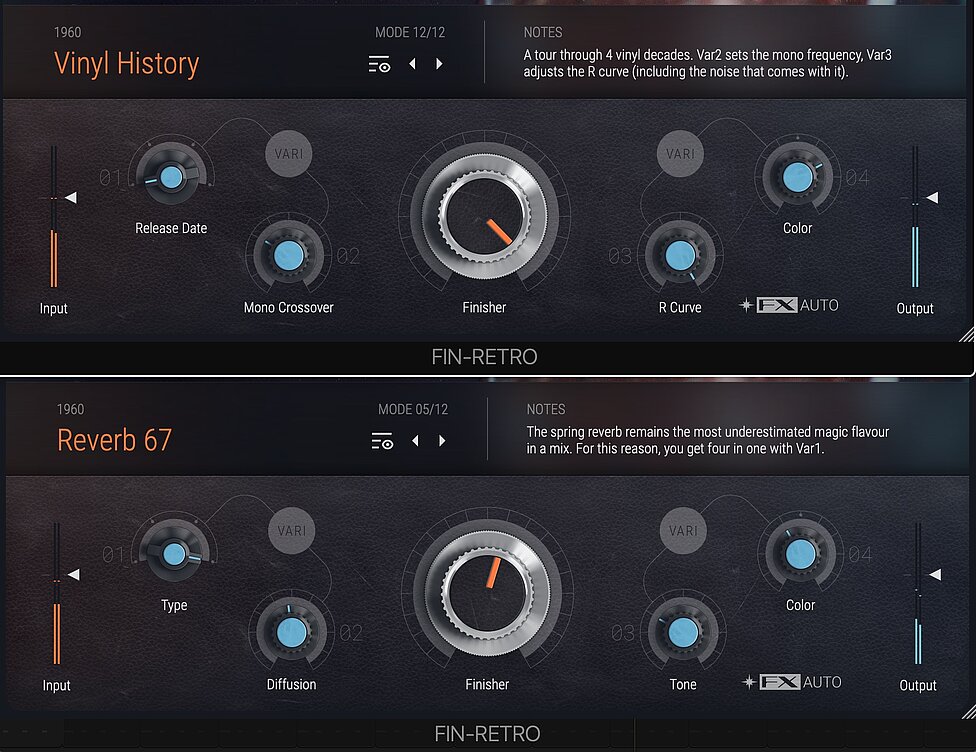
Serial Finisher RETRO settings used for a panned guitar going through a 1960s style guitar amp.
4 bars of Virtual Guitarist SPARKLE followed by 4 bars with two instances of Finisher RETRO.
The 1970s
The 1970s marked a huge shift in music technology. It was the dawn of the modern multi-track recording era. The four tracks of the ’60s were abandoned for 24 track tape machines. We saw the first portable Minimoog synthesizers and Fender Rhodes electric pianos. These were soon followed by a variety of other monophonic, and soon polyphonic, synthesizers. Guitar processing grew in sophistication with the advent of wah-wah pedals and other envelope-following technology like vocoders and the Mu-Tron IIIl pedal.
With the increased available track count, close micing of instruments became more common. Drums had drier sounds overall, created in part by single-skinned toms and open bass drums. There were thicker clear black dot skins, bigger-sized drums, larger kits and more cymbals. We saw the onset of Stratocaster guitars, early drum machines, Tascam Porta Studios, and alternative delivery formats like cassette and 8-track tapes, walkmans, and car stereo tape decks.
In this example, I’ve used ROYAL 2, SOLID 2, and SPARKLE plus a Fender Rhodes instrument to create a generic disco-ish type of 70’s track. Again, it sounds respectable on its own. But with a few instances of Finisher RETRO with various 70s modes used, a layer of 70s attitude is added to the mix.
A 70s disco style arrangement using software instruments.
Finisher RETRO added to the tracks gives the mix 70’s attitude to spare!
Finisher RETRO is used on drums for subtle transistor style saturation. And on the bass for 1970s vinyl style record processing. The guitar is again using two instances of Finisher RETRO set up in series. The first creates the classic wah effect but with a twist. Automating the Finisher knob, in addition to a couple of the variations, breathes life into the movement of the wah envelope. The second pedal adds Phaser style processing to the filtered signal after the output stage of the wah.
Hear the effect of automating several Finisher RETRO parameters.
The Rhodes also hosts two instances of Finisher Retro. The first is set for suitcase Rhodes style tremolo/panning. The second adds chorus to the panned signal.
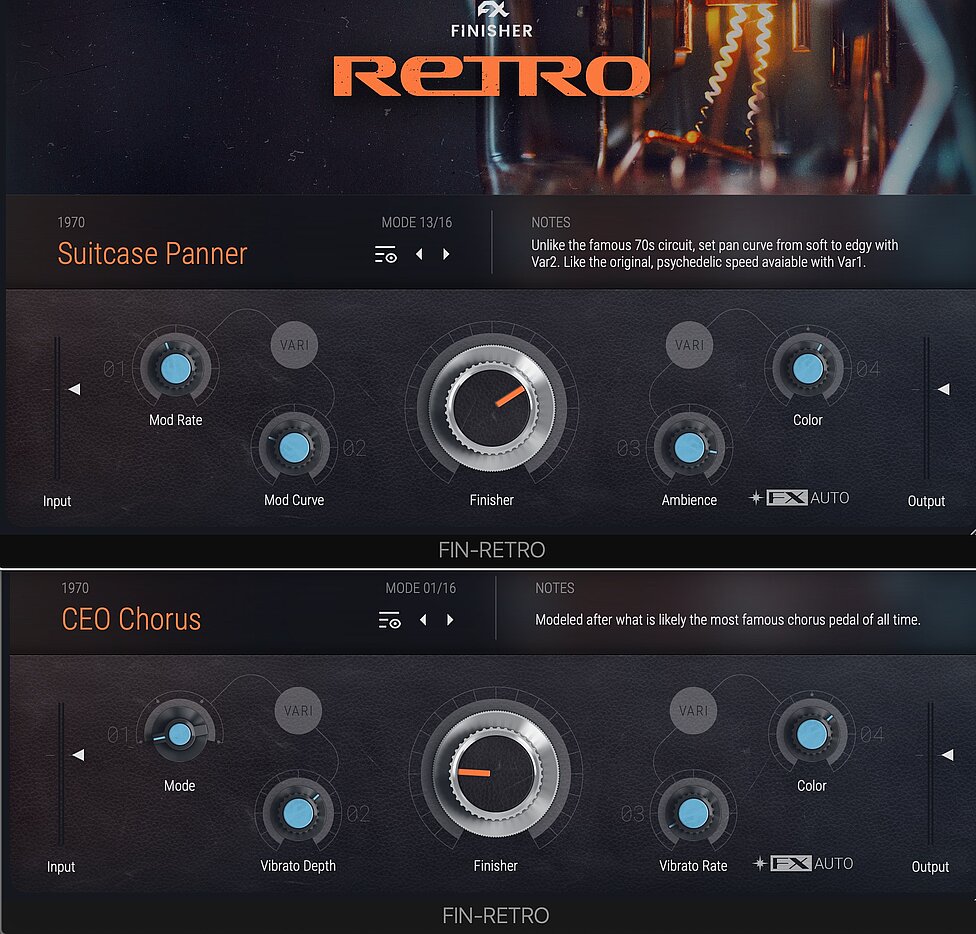
Dual Finisher RETRO instances, used to add Rhodes style panning and chorus.
Thanks to UJAM, we can now recreate yesterday once more. The past can never be either as we remember it or as we imagined it was. With Finisher RETRO, the past becomes a living, breathing component of today. And of tomorrow.
Stay tuned for part 2, where we explore the sounds of the 1980’s and 1990’s.
Stay up to date
Sign up and we’ll send you an e-mail with product news and helpful stuff every now and then. You may unsubscribe at any time.
Defy Limits
We develop software solutions that enable people to create, consume and interact with music.
